Abstract
Flac mutants have been isolated in Escherichia coli K-12 which carry dominant mutations resulting in insensitivity to transfer inhibition by the Fin+ I-like plasmid R62. These mutants were still sensitive to transfer inhibition by the fin+ F-like plasmid R100 and, conversely, FlactraO− and traP− mutants, which are insensitive to R100 inhibition, were still sensitive to R62. The sites of action of the two inhibition systems are therefore different. Furthermore, inhibition by R62, unlike R100, did not require an F-specified product. Like R100, R62 prevented transfer, pilus formation, and surface exclusion and, therefore, probably inhibits expression of the transfer operon traA through traI. However, R62 was different from R100 in inhibiting transfer of J-independent mutants, indicating that its effect on the transfer operon is probably direct rather than via traJ. This is consistent with the different sites of action of the two inhibition systems. None of the Flac mutants overproduced pili in the absence of R62, although one mutant differing from those described above showed increased levels of transfer and surface exclusion.
Full text
PDF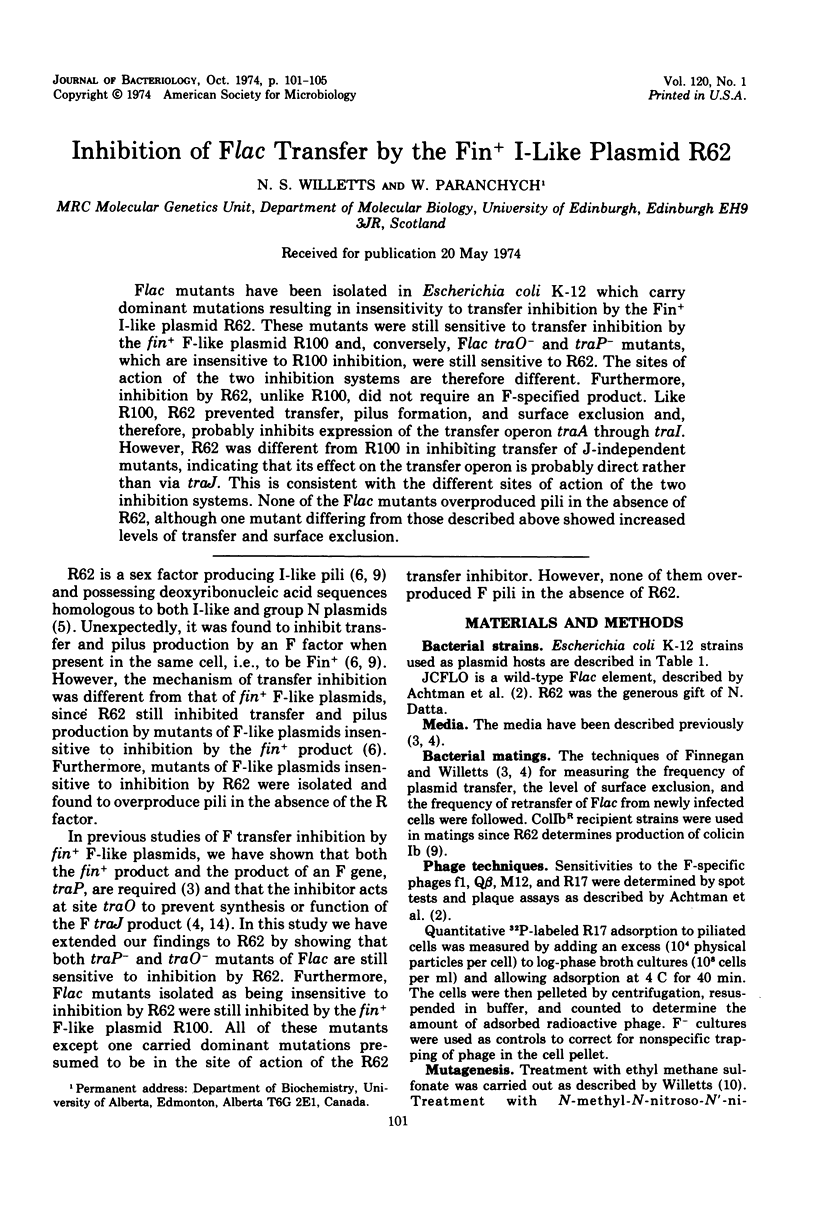
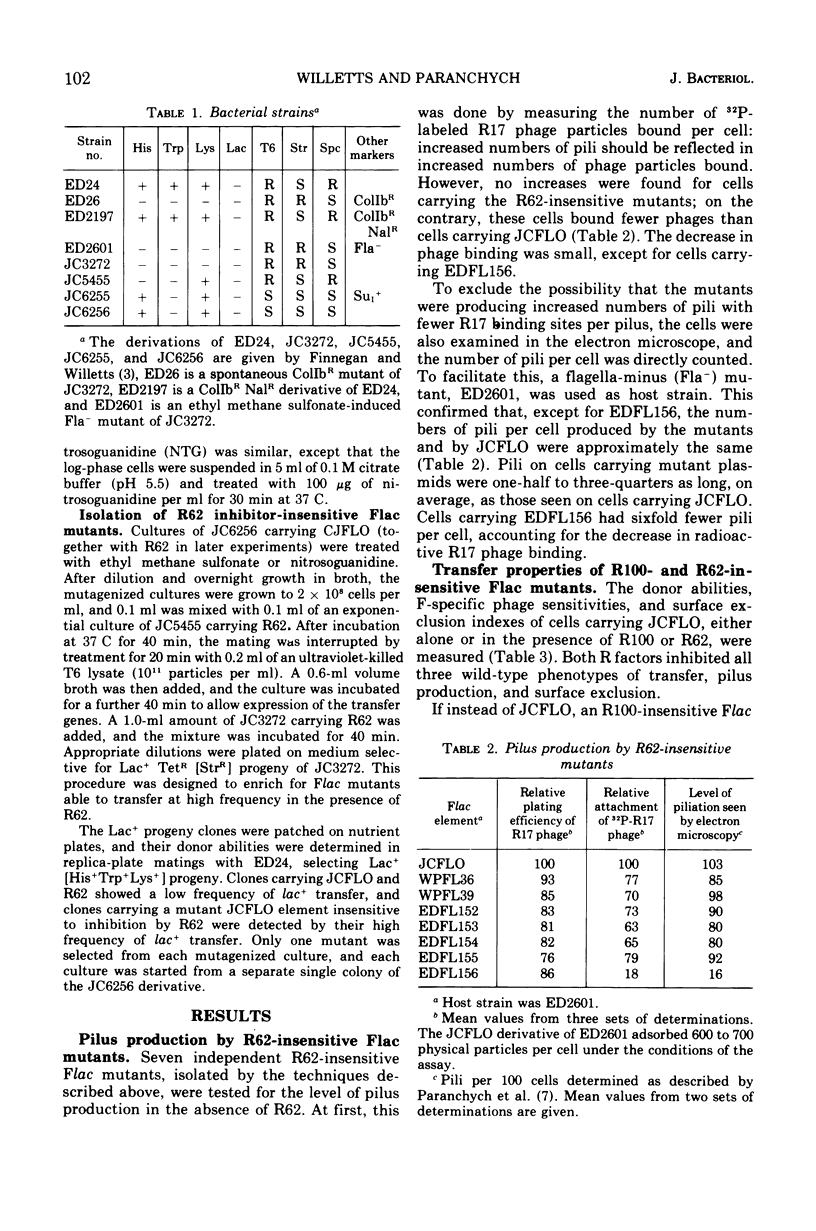
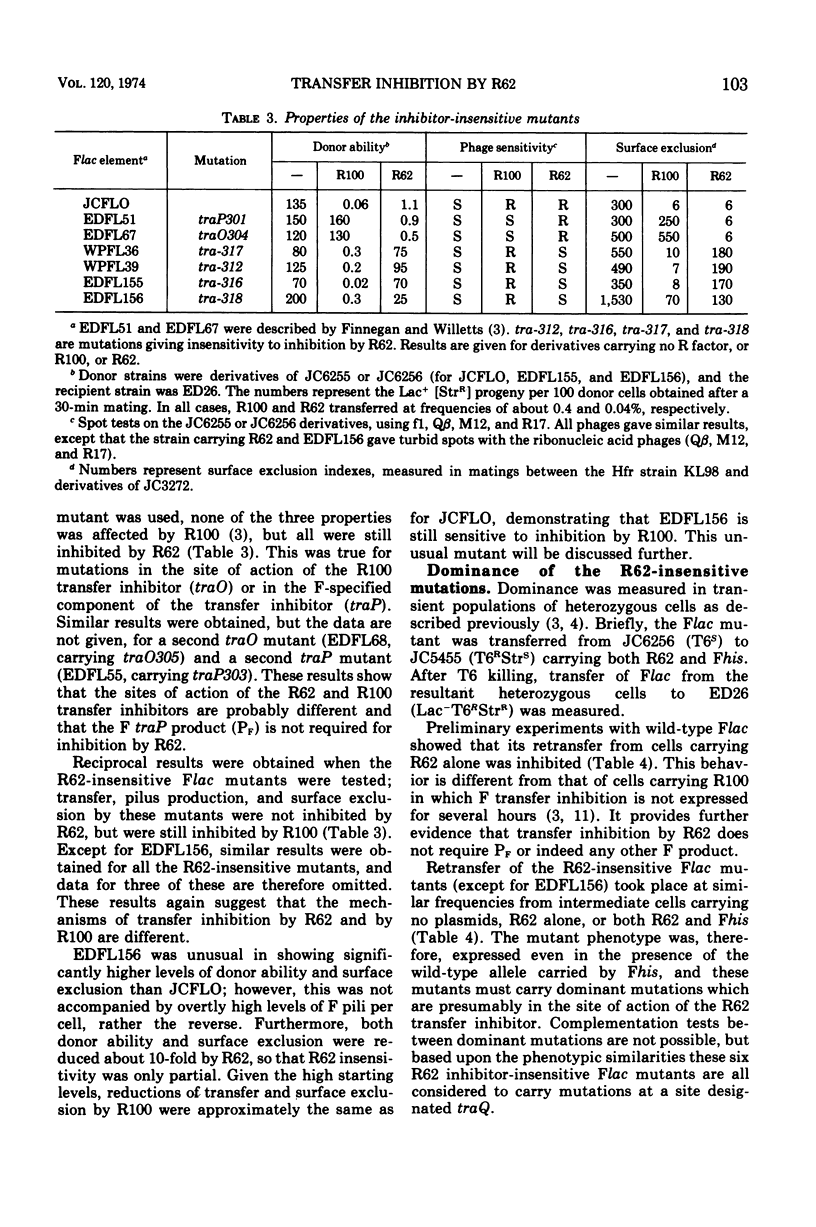
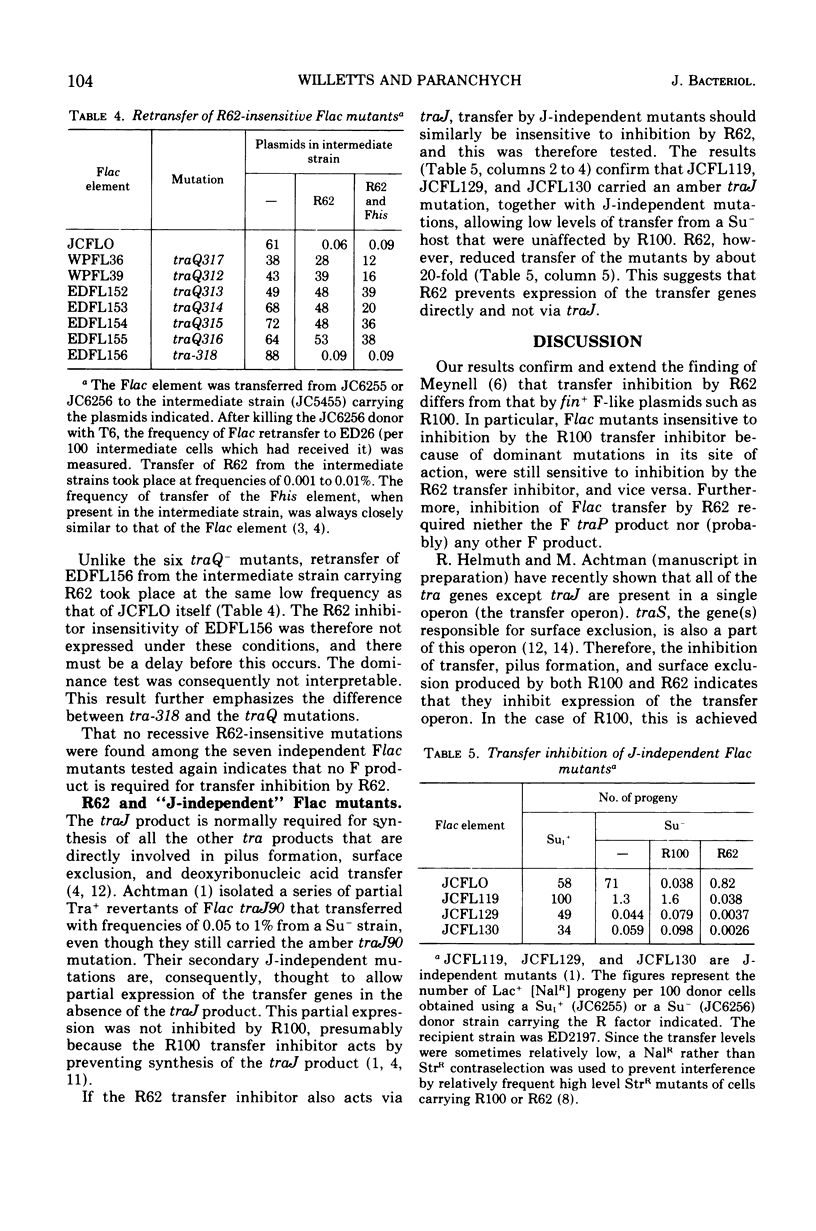
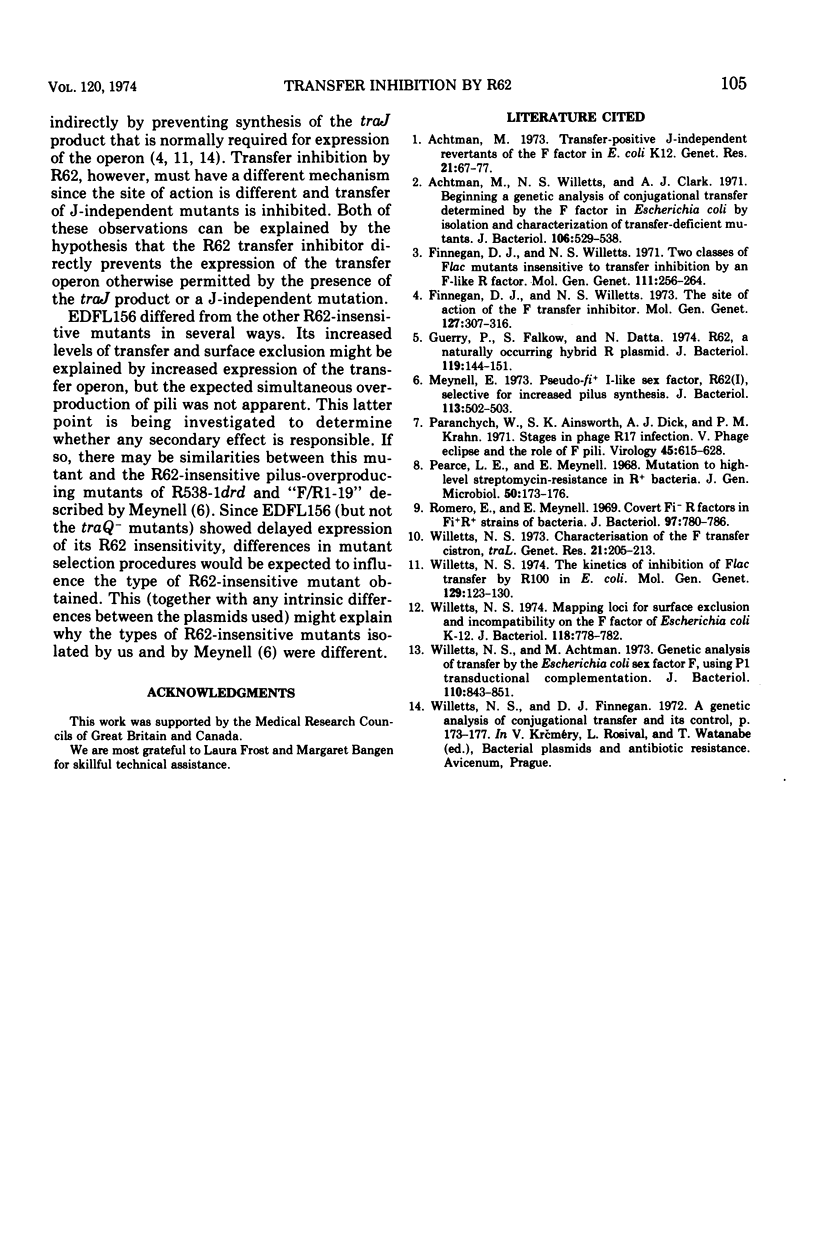
Selected References
These references are in PubMed. This may not be the complete list of references from this article.
- Achtman M., Willetts N., Clark A. J. Beginning a genetic analysis of conjugational transfer determined by the F factor in Escherichia coli by isolation and characterization of transfer-deficient mutants. J Bacteriol. 1971 May;106(2):529–538. doi: 10.1128/jb.106.2.529-538.1971. [DOI] [PMC free article] [PubMed] [Google Scholar]
- Finnegan D. J., Willetts N. S. Two classes of Flac mutants insensitive to transfer inhibition by an F-like R factor. Mol Gen Genet. 1971;111(3):256–264. doi: 10.1007/BF00433110. [DOI] [PubMed] [Google Scholar]
- Finnegan D., Willetts N. The site of action of the F transfer inhibitor. Mol Gen Genet. 1973 Dec 31;127(4):307–316. doi: 10.1007/BF00267101. [DOI] [PubMed] [Google Scholar]
- Guerry P., Falkow S., Datta N. R62, a naturally occurring hybrid R plasmid. J Bacteriol. 1974 Jul;119(1):144–151. doi: 10.1128/jb.119.1.144-151.1974. [DOI] [PMC free article] [PubMed] [Google Scholar]
- Meynell E. Pseudo-fi + I-like sex factors, R62(I), selective for increased pilus synthesis. J Bacteriol. 1973 Jan;113(1):502–503. doi: 10.1128/jb.113.1.502-503.1973. [DOI] [PMC free article] [PubMed] [Google Scholar]
- Paranchych W., Ainsworth S. K., Dick A. J., Krahn P. M. Stages in phage R17 infection. V. Phage eclipse and the role of F pili. Virology. 1971 Sep;45(3):615–628. doi: 10.1016/0042-6822(71)90176-0. [DOI] [PubMed] [Google Scholar]
- Pearce L. E., Meynell E. Mutation to high-level streptomycin-resistance in R+ bacteria. J Gen Microbiol. 1968 Jan;50(1):173–176. doi: 10.1099/00221287-50-1-173. [DOI] [PubMed] [Google Scholar]
- Romero E., Meynell E. Covert fi- R factors in fi+ R+ strains of bacteria. J Bacteriol. 1969 Feb;97(2):780–786. doi: 10.1128/jb.97.2.780-786.1969. [DOI] [PMC free article] [PubMed] [Google Scholar]
- Willetts N. S. Characterization of the F transfer cistron, traL. Genet Res. 1973 Apr;21(2):205–213. doi: 10.1017/s0016672300013379. [DOI] [PubMed] [Google Scholar]
- Willetts N. S. The kinetics of inhibition of Flac transfer by R100 in E. coli. Mol Gen Genet. 1974 Mar 14;129(2):123–130. doi: 10.1007/BF00268626. [DOI] [PubMed] [Google Scholar]
- Willetts N., Achtman M. Genetic analysis of transfer by the Escherichia coli sex factor F, using P1 transductional complementation. J Bacteriol. 1972 Jun;110(3):843–851. doi: 10.1128/jb.110.3.843-851.1972. [DOI] [PMC free article] [PubMed] [Google Scholar]
- Willetts N. Mapping loci for surface exclusion and incompatibility on the F factor of Escherichia coli K-12. J Bacteriol. 1974 Jun;118(3):778–782. doi: 10.1128/jb.118.3.778-782.1974. [DOI] [PMC free article] [PubMed] [Google Scholar]


